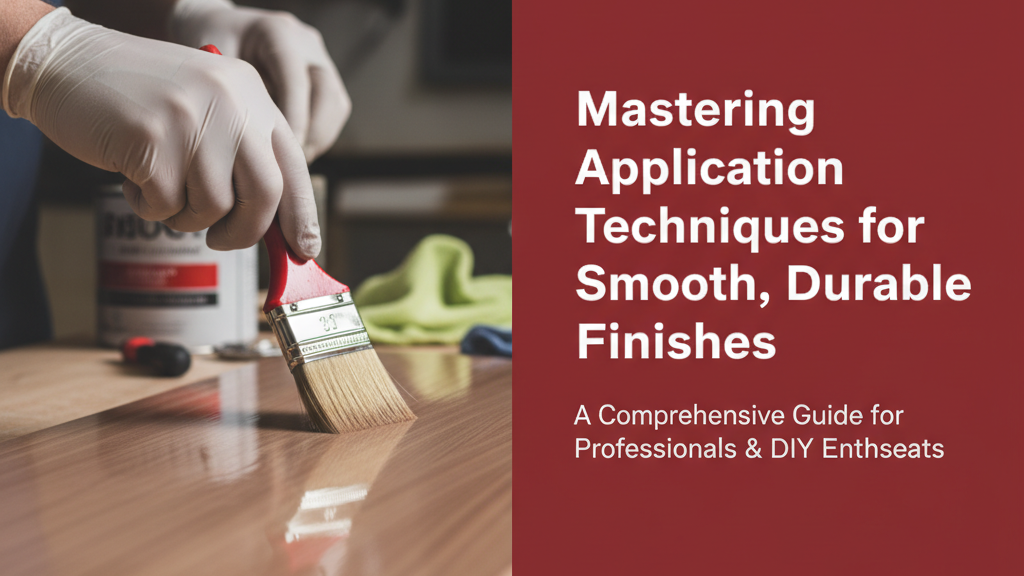Introduction to Smooth and Durable Finishes
A smooth, durable finish transforms surfaces from functional to flawless—whether it’s walls, furniture, or decorative elements. Achieving this requires understanding materials, preparation methods, and application techniques suited to Indian conditions like humidity, dust, and temperature fluctuations.
Essential Tools and Materials
Quality finishes start with the right tools:
- Surface preparation: Sandpaper (120–220 grit), putty knives, tack cloth
- Application: High-density foam rollers, synthetic bristle brushes, spray equipment (for large areas)
- Materials: Primer, filler putty, finishing coats (water-based or solvent-based, depending on surface)
Step-by-Step Application Techniques
Surface Preparation
90% of a smooth finish depends on preparation:
- Clean surfaces thoroughly to remove grease, dust, or old flaking material.
- Repair cracks/holes with filler putty; sand smooth once dry.
- Apply primer to ensure even absorption and adhesion of the finish.
Choosing the Right Product
Match your finish to the surface and environment:
- High-moisture areas: Use mould-resistant acrylic or epoxy-based finishes.
- Wood surfaces: Opt for polyurethane or lacquer for durability.
- Walls: Water-based emulsions with washable properties.
Applying the Finish
- Stir (don’t shake) the product to avoid bubbles.
- Apply thin, even coats using overlapping strokes—thick layers lead to drips.
- Maintain consistent drying times between coats (usually 2–4 hours in 25–35°C).
Tips for Achieving a Smooth Finish
- Work in natural light to spot imperfections immediately.
- Sand lightly between coats with 220-grit sandpaper for a glass-like surface.
- For brush marks, lightly drag a dry brush over wet paint (“tipping off”).
Maintaining Durability Over Time
Extend your finish’s lifespan with:
- Regular dusting to prevent abrasive particles from scratching surfaces.
- Immediate cleaning of spills, especially on wood or laminated finishes.
- Annual inspections for chips or wear in high-traffic areas.
Common Mistakes to Avoid
- Skipping primer: Leads to uneven absorption and patchy finishes.
- Overloading tools: Excess product causes drips and texture issues.
- Ignoring weather: Avoid application during monsoons or extreme heat (>40°C).
Conclusion: Perfecting Your Finish
Smooth, durable finishes rely on meticulous preparation, appropriate product selection, and controlled application. Whether DIY or professional, patience and attention to detail yield surfaces that withstand India’s climatic challenges while retaining their aesthetic appeal.

